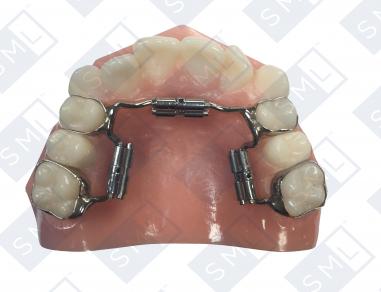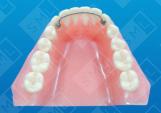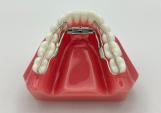A very effective combination distal-driving, transverse development appliance. This design is typically used to regain lost cuspid space. A common cause for this type of crowding is the early loss of the primary molars. Primary molars normally serve to maintain valuable “E” space for the eruption of the bicuspids and cuspids.
When they are lost early, the permanent first molars drift forward into the areas intended for bicuspid eruption. Consequently, the bicuspid erupts forward into the space intended for cuspid eruption. This Three-Way Sagittal design will regain both arch length and width. Arch width is obtained by transverse expansion.
Arch length is regained by distalizing the posterior segments. Since this is a fixed appliance it provides molar bodily movement and excellent expansion in the posterior region. When distalizing the molars it is recommended to distalize one side at a time before developing transversely. Once the molars are in the desired position and arch width is acceptable the appliance can be removed, a lingual Nance appliance placed to stabilize molar position, the full arch bracket employed to complete bicuspid distalization and anterior alignments.










